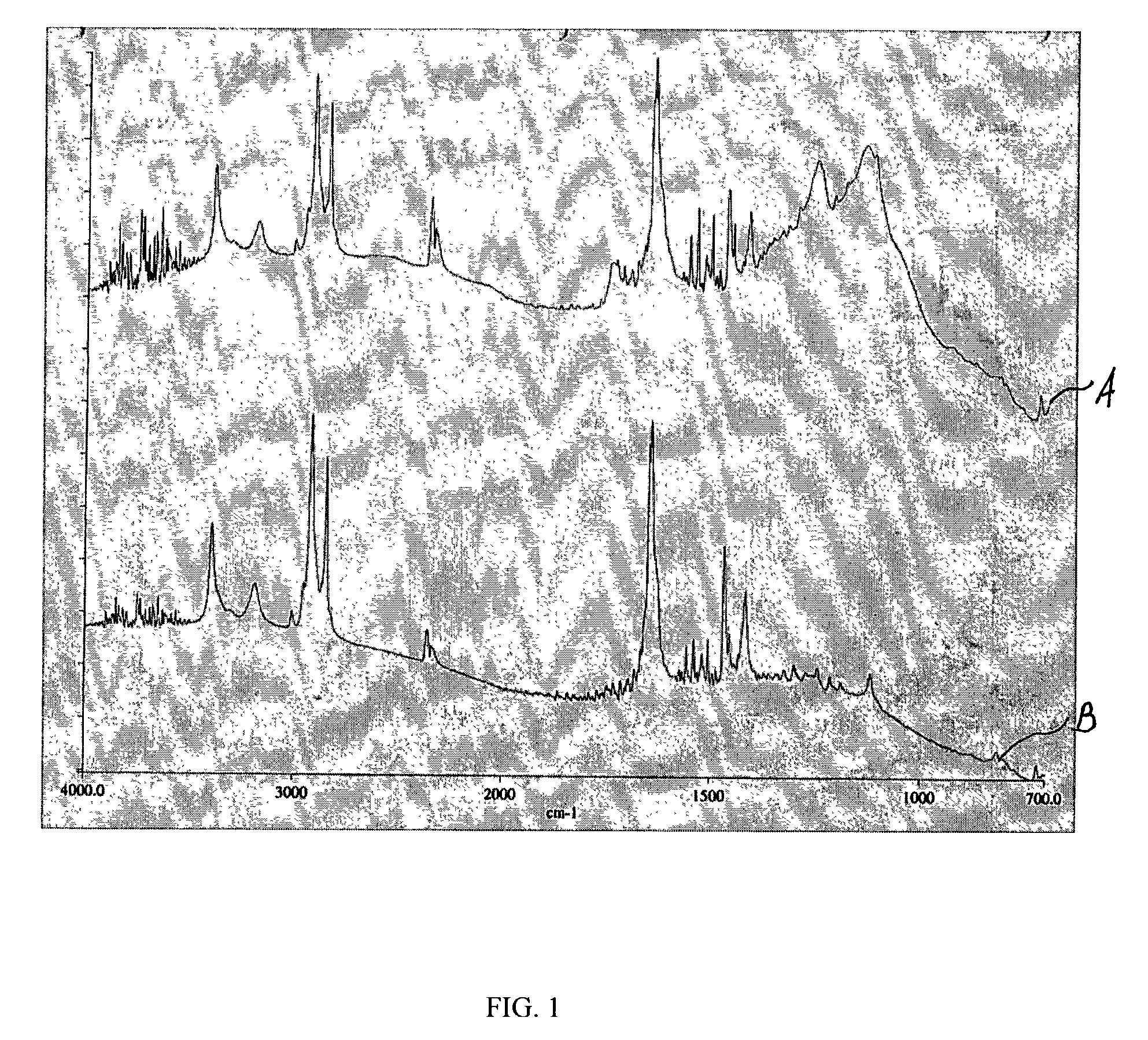Plasma-generated coatings for medical devices and methods for fabricating thereof
a technology of medical devices and plasma, which is applied in the direction of packaging foodstuffs, pharmaceutical containers, packaged goods, etc., can solve the problem of relative rapid depletion of the therapeutic substance from the polymer when the stent is placed
- Summary
- Abstract
- Description
- Claims
- Application Information
AI Technical Summary
Benefits of technology
Problems solved by technology
Method used
Image
Examples
example 1
[0055]A stent coated with EVAL is activated by being subjected to treatment by argon plasma. The parameters of the plasma are provided in Table 1. As a result of the plasma treatment, free radicals and peroxides are formed on the EVAL surface.
[0056]VDF is introduced at a flow rate of about 60 sccm and a pressure of about 90 mTorr, and argon plasma is re-initiated by applying the RF power of about 60 W to cause the formation of PVDF-like coating which serves as a bulk of the topcoat membrane. Other parameters of the argon plasma used at this time are provided in Table 3. The time needed for plasma-induced polymerization is about 4 minutes. The plasma is then turned off by terminating the RF power. The resulting PVDF-like polymer layer can have thickness of about 125 nanometers.
[0057]Alternatively, instead of the continuous wave plasma, a pulsed RF-plasma, for example, the RF-plasma having a duty cycle in a range of between 10% and 100% can be used to induce plasma polymerization of V...
example 2
[0063]A stent coated with EVAL is activated by being subjected to treatment by argon plasma as described in Example 1. A topcoat membrane comprising a PVDF-like bulk and a PE-like surface sub-layer is plasma-deposited on the stent as described in Example 1. The PE-like surface sub-layer is then further modified. Before the plasma chamber is argon-purged, the pressure is reduced to about 1 mTorr, and streams of acrylic acid gas and of carbon dioxide are introduced to the plasma chamber. Acrylic acid is introduced at a rate of about 4 mmol / min (0.2 sccm), and carbon dioxide—at a rate of about 90 sccm. Acrylic acid / carbon dioxide plasma is initiated by applying RF power of between about 80 W and 100 W, for example, about 90 W. The plasma is maintained for about 3 minutes and then discontinued by turning off the RF power. The chamber is then pumped down to less than about 1 mTorr of pressure and flooded with argon for 3 minutes.
[0064]As a result of the above-described process, a couplin...
example 3
[0068]A PVDF-like / PE-like topcoat membrane is deposited on a stent as described in Example 1. The surface PE-like sub-layer is modified as described in Example 2 and the carboxylated structure Z—COOH is formed. The carboxylated structure Z—COOH is then used for conjugating poly(ethylene glycol)-isocyanate adduct (PEG-ISO). PEG-ISO is a PEG based product having isocyanate fragments —N═C═O. An example of a PEG-ISO suitable for bonding to the topcoat membrane is a methoxylated PEG-ISO adduct CH3—[O—CH2—CH2]n—N═C═O. This adduct, manufactured by Shearwater Corp. of Huntsville, Ala., has a molecular weight of about 5,000 which corresponds to the value of the integer “n” of about 112.
[0069]Due to the presence of the isocyanate groups, PEG-ISO is chemically very active and can react with carboxyl group of Z—COOH via the —N═C═O group of PEG-ISO, having strong electron accepting properties, as illustrated by reaction scheme (IV):
[0070]
[0071]Since Z—COOH is a relatively weak nucleophilic agent...
PUM
| Property | Measurement | Unit |
|---|---|---|
| Pressure | aaaaa | aaaaa |
| Pressure | aaaaa | aaaaa |
| Pressure | aaaaa | aaaaa |
Abstract
Description
Claims
Application Information
 Login to View More
Login to View More - R&D
- Intellectual Property
- Life Sciences
- Materials
- Tech Scout
- Unparalleled Data Quality
- Higher Quality Content
- 60% Fewer Hallucinations
Browse by: Latest US Patents, China's latest patents, Technical Efficacy Thesaurus, Application Domain, Technology Topic, Popular Technical Reports.
© 2025 PatSnap. All rights reserved.Legal|Privacy policy|Modern Slavery Act Transparency Statement|Sitemap|About US| Contact US: help@patsnap.com



